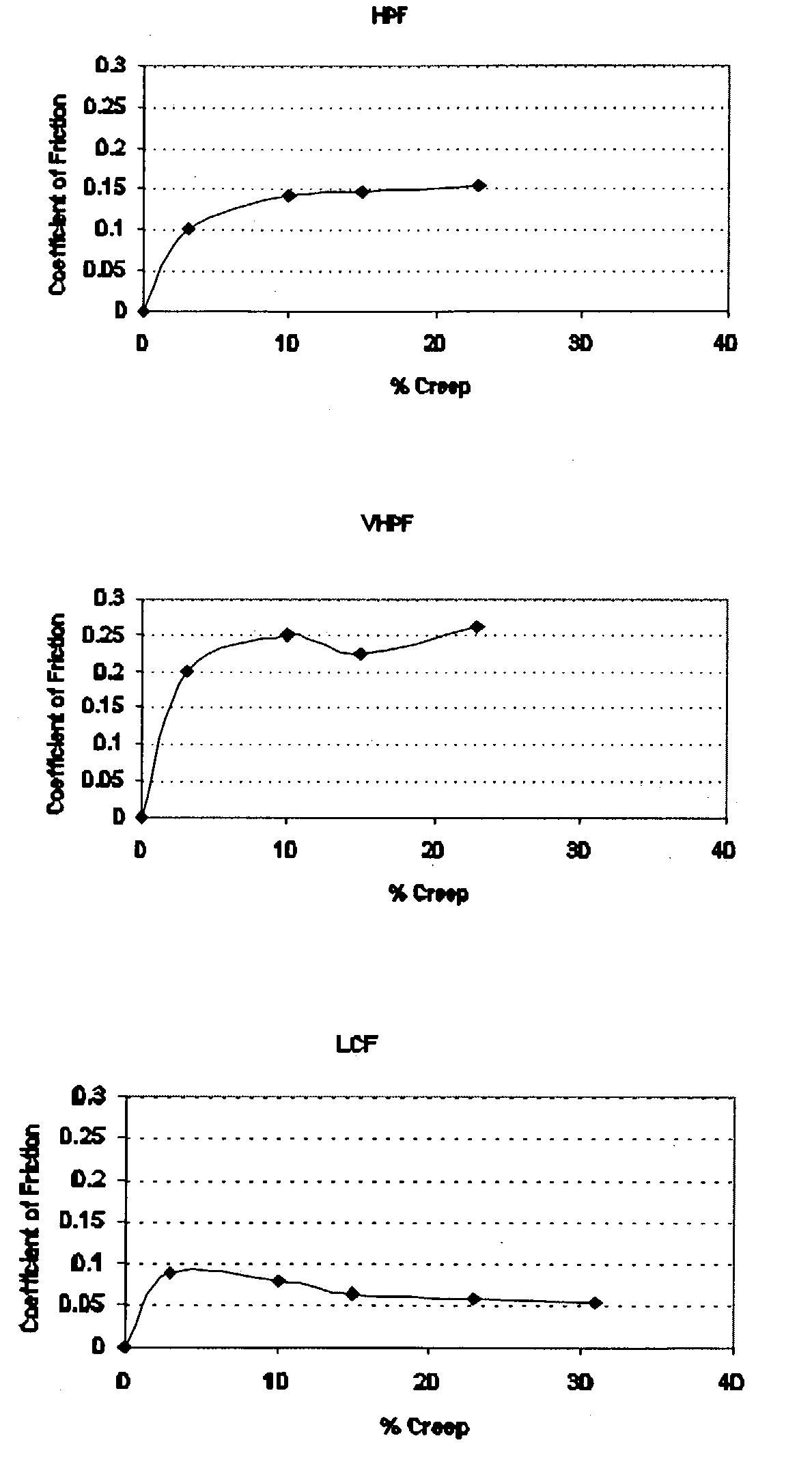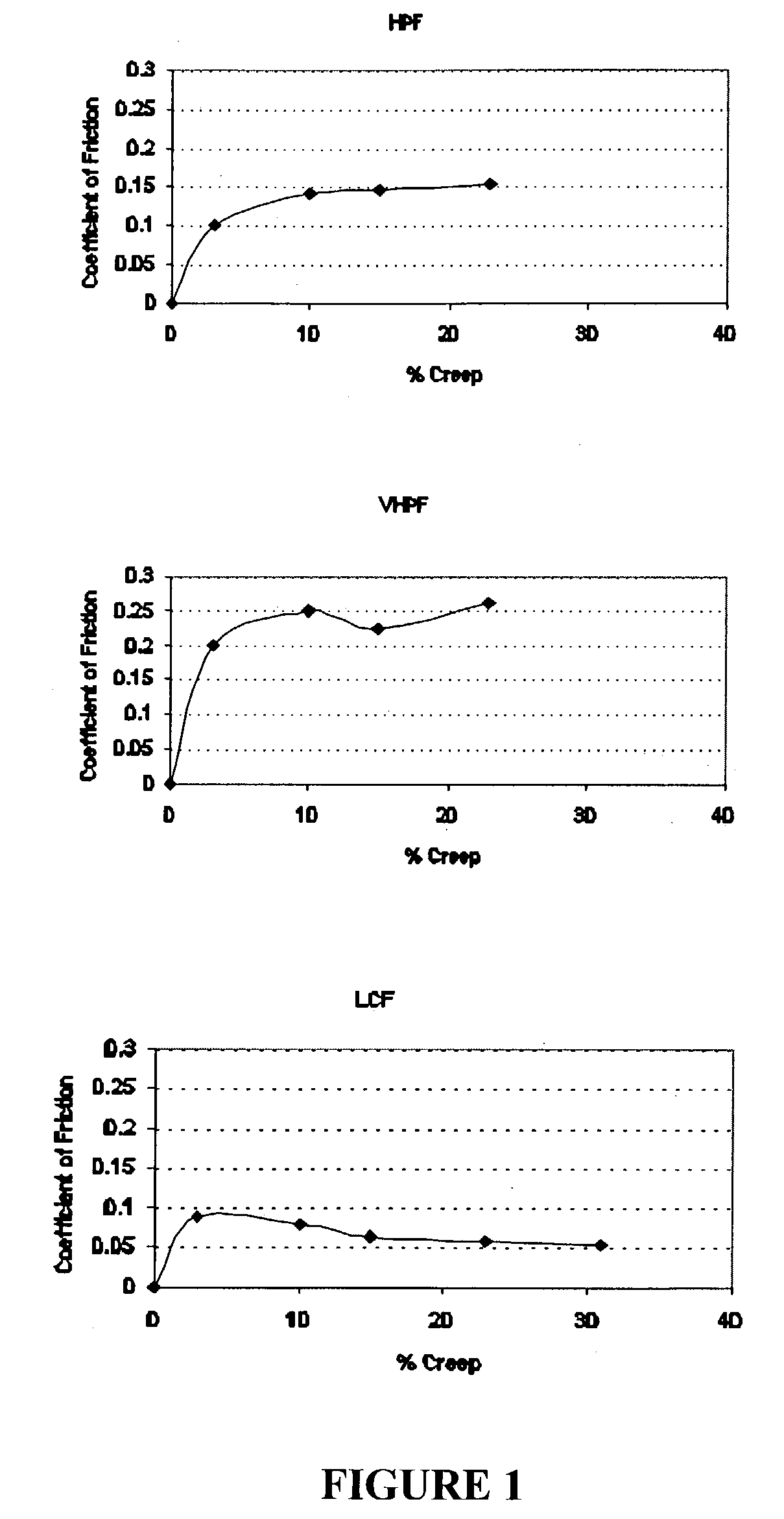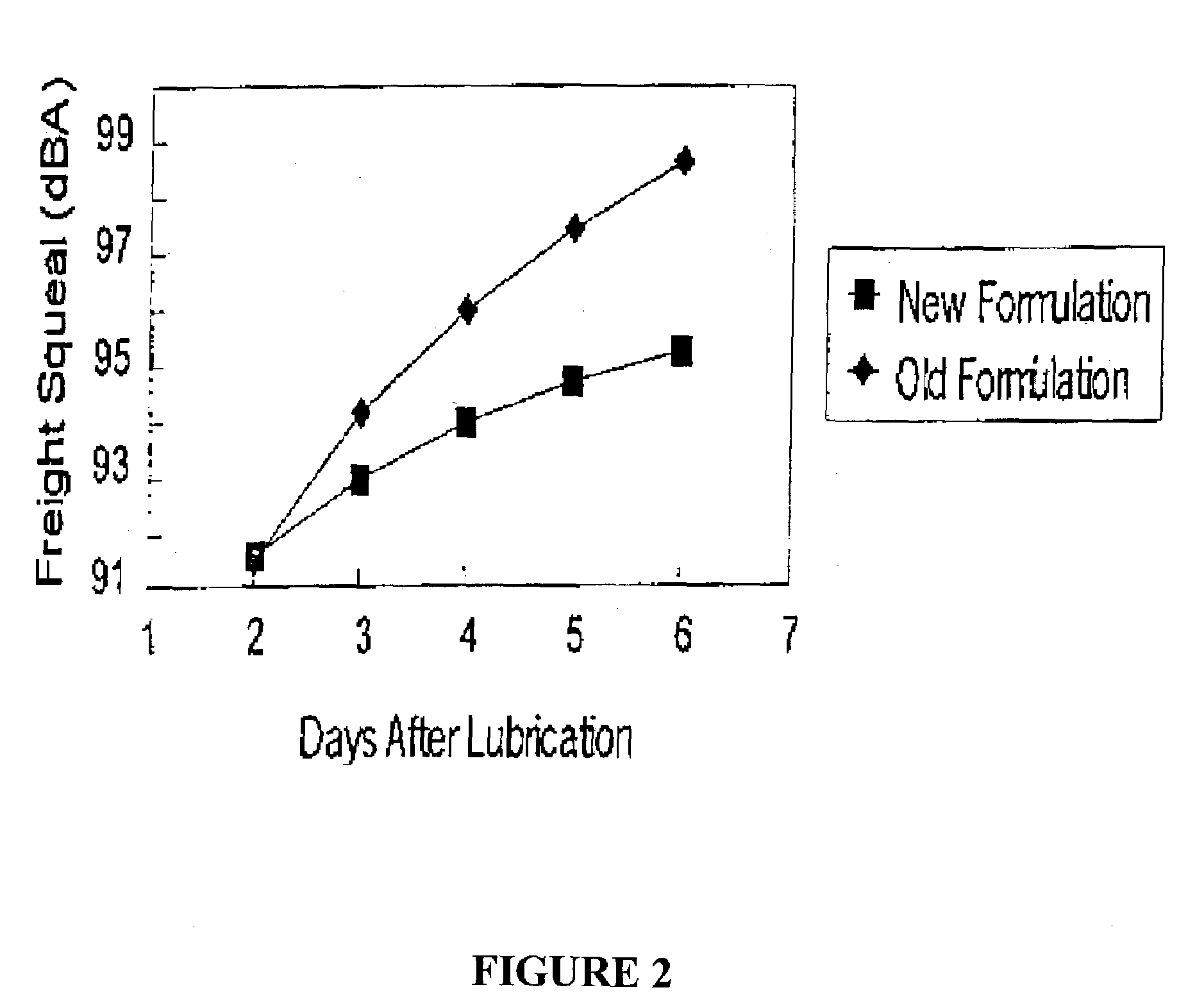Method for reducing wear of steel elements in sliding-rolling contact
a technology of sliding-rolling contact and steel elements, which is applied in the direction of rail lubrication, rail wetting/lubrication, manufacturing tools, etc., can solve the problems of uneven wear of mechanical components, high noise level of steel-rail and steel-wheel transportation systems, and large noise of mechanical components such as wheels, rails and other rail components, so as to reduce the amount of composition , the effect of high positive friction
- Summary
- Abstract
- Description
- Claims
- Application Information
AI Technical Summary
Benefits of technology
Problems solved by technology
Method used
Image
Examples
example 1
Characterization of Liquid Friction Control Compositions
Amsler Protocol
[0257]Retentivity was tested using the Amsler machine. This device simulates the contact between the wheel of a train and the rail, and measures the coefficient of friction between the two bodies over time. The Amsler machine uses two different discs to simulate the wheel and rail. The two discs are kept in contact by an adjustable spring at a constant force. A composition is applied to a clean disc in a controlled manner to produce a desired thickness of coating on the disc. For the analysis disclosed herein the compositions are applied using a fine paint brush to ensure complete coating of the disc surface. The amount of applied composition is determined by weighing the disc before and after application of the composition. Composition coatings range from 2 to 12 mg / disc. The composition is allowed to dry completely prior to testing. Typically, the coated discs are left to dry for at least an 8 hour period. The ...
example 2
Liquid Friction Control Compositions—Sample Composition 1
[0283]This example describes the preparation of another liquid frictional control composition characterized in exhibiting a high positive coefficient of friction. The components of this composition are listed in Table 5.
[0284]
TABLE 5High Positive Coefficient of Friction (HPF) CompositionComponentPercent (wt %)Water43.62Propylene Glycol14.17Bentonite2.45Molybdenum sulfide12Magnesium silicate12Ammonia0.28Rhoplex ® 26415.08Oxaban ® A0.28Co-6300.12
[0285]Propylene glycol may be increased by about 20% to enhance low temperature performance. This composition is prepared as outlined in Example 1.
[0286]The composition of Table 6, was applied on the top of rail using an atomized spray system comprising a primary pump that fed the liquid composition from a reservoir through a set of metering pumps. The composition is metered to an air-liquid nozzle where the primary liquid stream is atomized with 100 psi air. In such a manner a controlle...
example 3
Liquid Friction Control Composition—Sample HPF Composition 2
[0292]This example describes a liquid composition characterized in exhibiting a high and positive coefficient of friction. The components of this composition are listed in Table 6.
[0293]
TABLE 6High and Positive Coefficient of Friction (HPF) CompositionComponentPercent (wt %)Water76.87Propylene Glycol14Hectabrite ®1.5Molybdenum disulfide1.99Magnesium silicate1.99Ammonia0.42Rhoplex ® 2842.65Oxaban ® A0.42Co-6300.1Colloids 648 ®0.06
[0294]The liquid friction control composition is prepared as outlined in Example 1, and may be applied to a rail as an atomized spray, but is not intended to be limited to application as an atomized spray, nor is the composition intended to be used only on rails.
[0295]This liquid friction control composition reduces lateral forces in rail curves, noise, the onset of corrugations, and reduces energy consumption, and is suitable for use within a rail system.
PUM
| Property | Measurement | Unit |
|---|---|---|
| weight percent | aaaaa | aaaaa |
| weight percent | aaaaa | aaaaa |
| weight percent | aaaaa | aaaaa |
Abstract
Description
Claims
Application Information
 Login to View More
Login to View More - R&D
- Intellectual Property
- Life Sciences
- Materials
- Tech Scout
- Unparalleled Data Quality
- Higher Quality Content
- 60% Fewer Hallucinations
Browse by: Latest US Patents, China's latest patents, Technical Efficacy Thesaurus, Application Domain, Technology Topic, Popular Technical Reports.
© 2025 PatSnap. All rights reserved.Legal|Privacy policy|Modern Slavery Act Transparency Statement|Sitemap|About US| Contact US: help@patsnap.com



